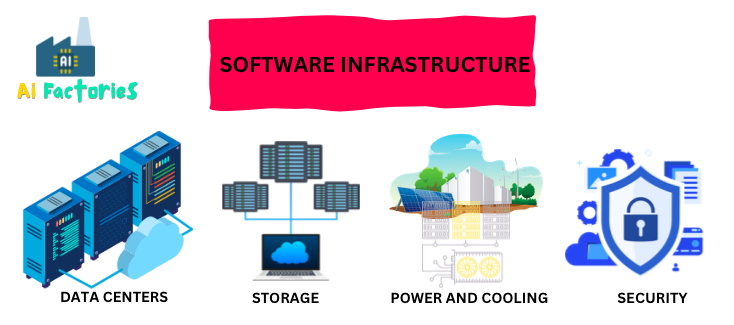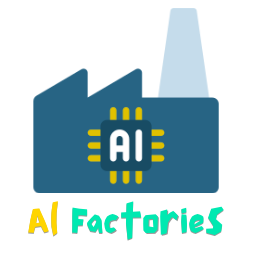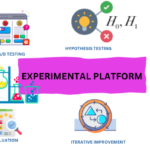
The concepts of software, connectivity, and infrastructure in the context of AI factories (often referred to as AI data centers or compute centers) are central to understanding how artificial intelligence systems are developed, trained, and deployed at scale. Here’s an expansion on each of these components:
1. Software
Software in AI factories encompasses a wide range of tools and systems, including but not limited to:
- Development Environments and Frameworks: These are platforms where AI models are designed, coded, and tested. Examples include TensorFlow, PyTorch, and Jupyter notebooks.
- Machine Learning Management Systems (MLMS): These systems manage the lifecycle of an AI model, including data preprocessing, model training, model evaluation, and version control. They facilitate reproducibility and scalability.
- Automation and Orchestration Tools: Software that automates the workflow of deploying AI models and managing their interaction with other systems. Kubernetes and Docker are commonly used for orchestration and containerization, respectively.
- AI-specific Operating Systems: Some AI factories might deploy specialized operating systems that are optimized for handling intensive computational tasks and managing hardware resources efficiently.
2. Connectivity
Connectivity in AI factories refers to the networks and protocols that facilitate data flow and communication within the AI ecosystem:
- High-speed Networking: Essential for transferring large datasets and model parameters across systems. Technologies like InfiniBand and high-speed Ethernet are critical for reducing latency and increasing throughput.
- Cloud Services Integration: Many AI factories leverage cloud services for elastic compute and storage capabilities. Seamless integration with cloud providers ensures that resources can be scaled up or down based on demand.
- Edge Computing: Involves processing data near the source of data generation to reduce latency and bandwidth use. This is crucial for real-time AI applications like autonomous vehicles or IoT devices.
3. Infrastructure
The infrastructure of AI factories is the backbone of their capabilities, involving both physical and virtual components:
- Data Centers: These are equipped with high-performance computing (HPC) units, GPUs, and TPUs specifically designed to handle the massive computations required for training AI models.
- Storage Systems: Robust and scalable storage solutions are critical for managing the vast amounts of data used in training and deploying AI models. This includes both on-premises solutions and cloud storage services.
- Power and Cooling Systems: AI computations require significant electrical power, which in turn generates a lot of heat. Efficient cooling systems are therefore crucial to maintain performance and prevent hardware damage.
- Security Infrastructure: Security is paramount in AI factories due to the sensitive nature of the data and the potential consequences of security breaches. This includes physical security of the facilities and cybersecurity measures.
Integration and Management
Effective integration of software, connectivity, and infrastructure components is key to the success of AI factories. This involves both technical integration, such as ensuring software and hardware compatibility, and strategic management, such as aligning IT infrastructure with business goals and regulatory requirements. The overall architecture must be designed to support scalability, efficiency, and continuous improvement, reflecting the dynamic nature of AI development.
AI Factories: Episode 1 – So, what exactly is “AI Factories” or “AI Factory”?
Factories: Episode 2 – Virtuous Cycle in AI Factories
Factories: Episode 3 – The Components of AI Factories
AI Factories: Episode 4 – Data Pipelines
AI Factories: Episode 5 – Algorithm Development
AI Factories: Episode 6 – The Experimentation Platform
👍 Like | 💬 Comment | 🔗 Share
#DataPipelines #DataOps #AI #ArtificialIntelligence #DataManagement #AgileData #DataFlow #DataIntegration #DataTransformation #BusinessIntelligence #DataScience #TechInnovation #DigitalTransformation #AIFactories #MachineLearning #DataScience #AITechnology #DigitalTransformation #AIInnovation #AIStrategy #AIManagement #AIEthics #AIGovernance #DataManagement #AIIndustryApplications #FutureOfAI


